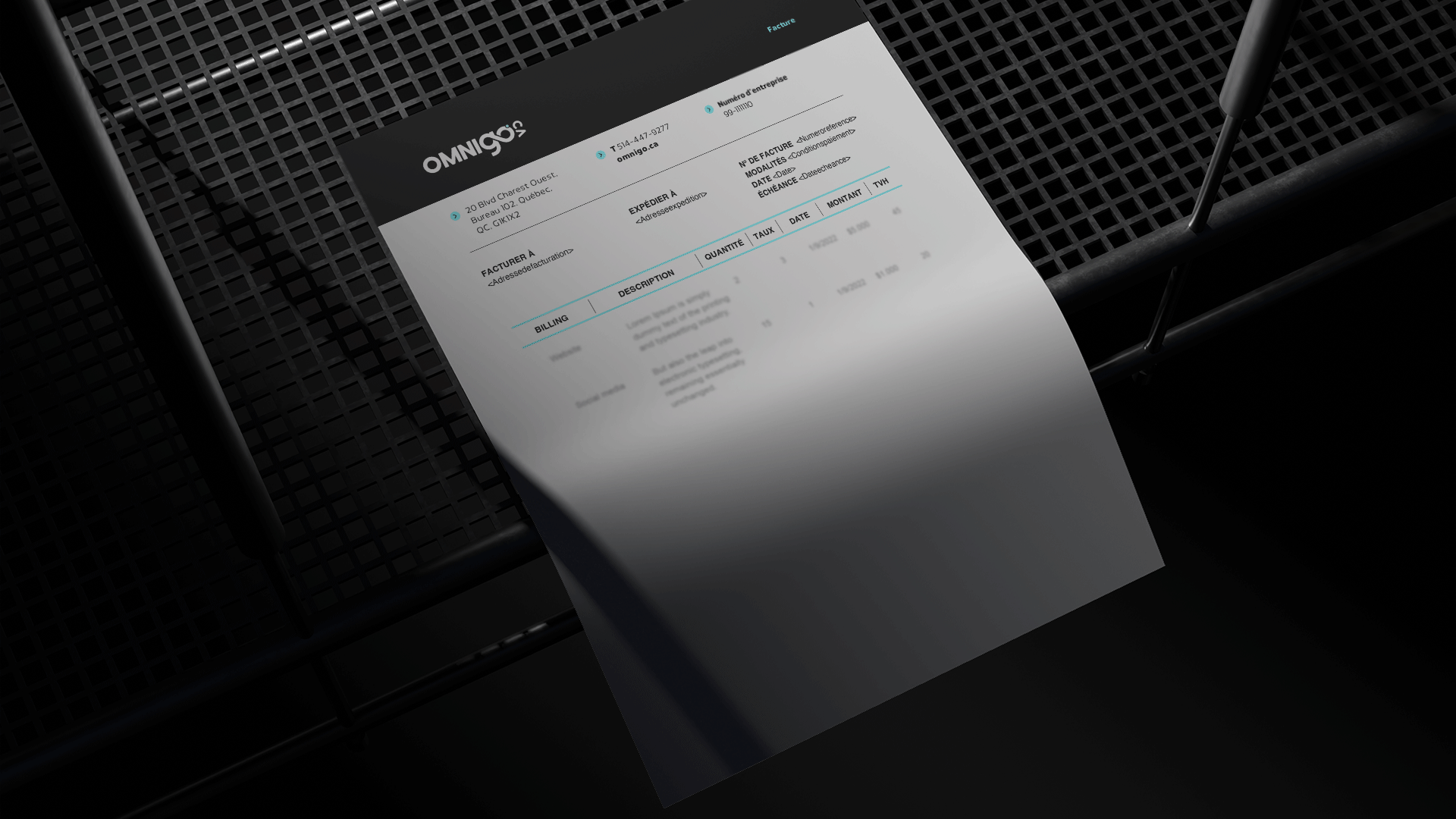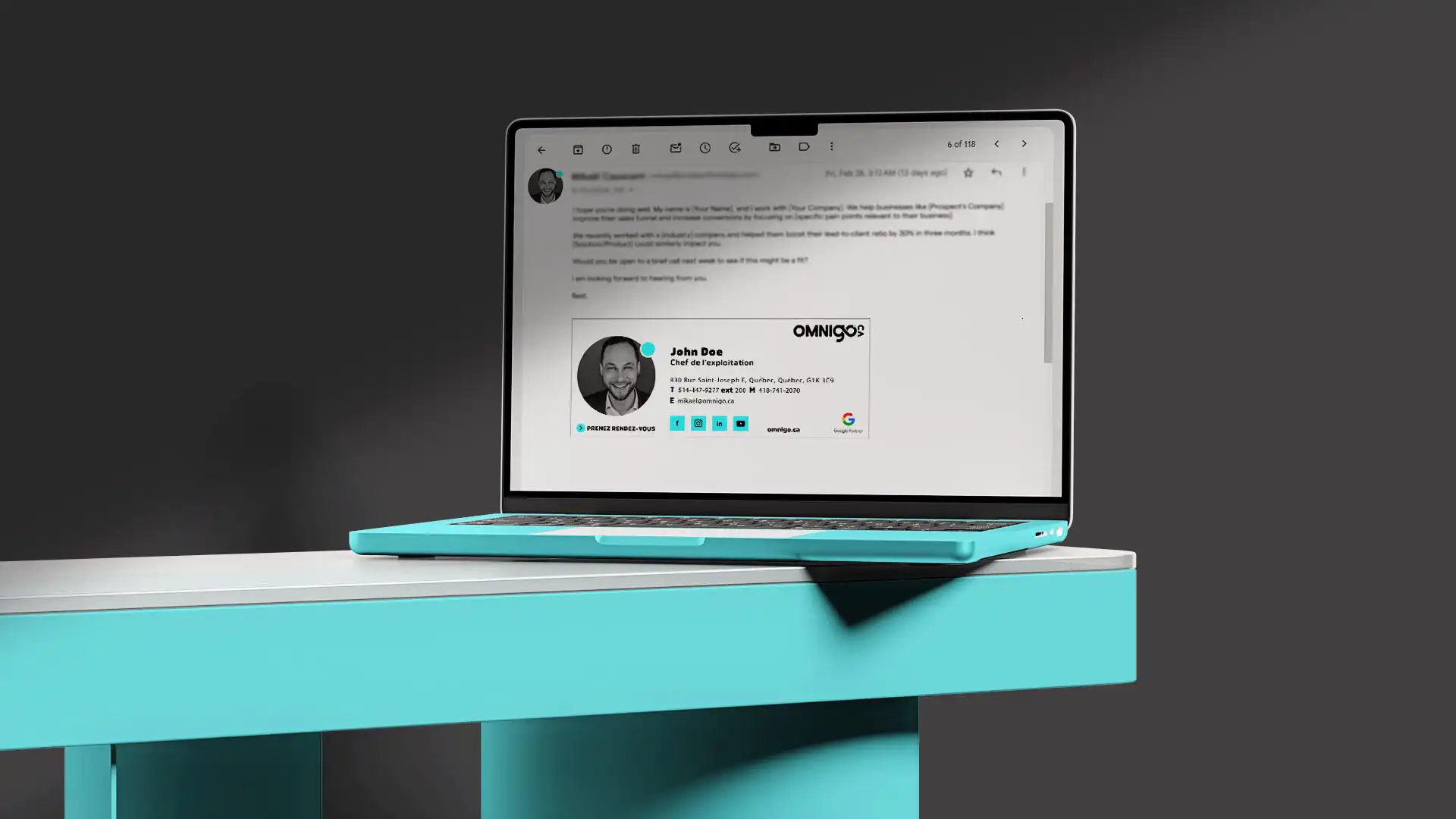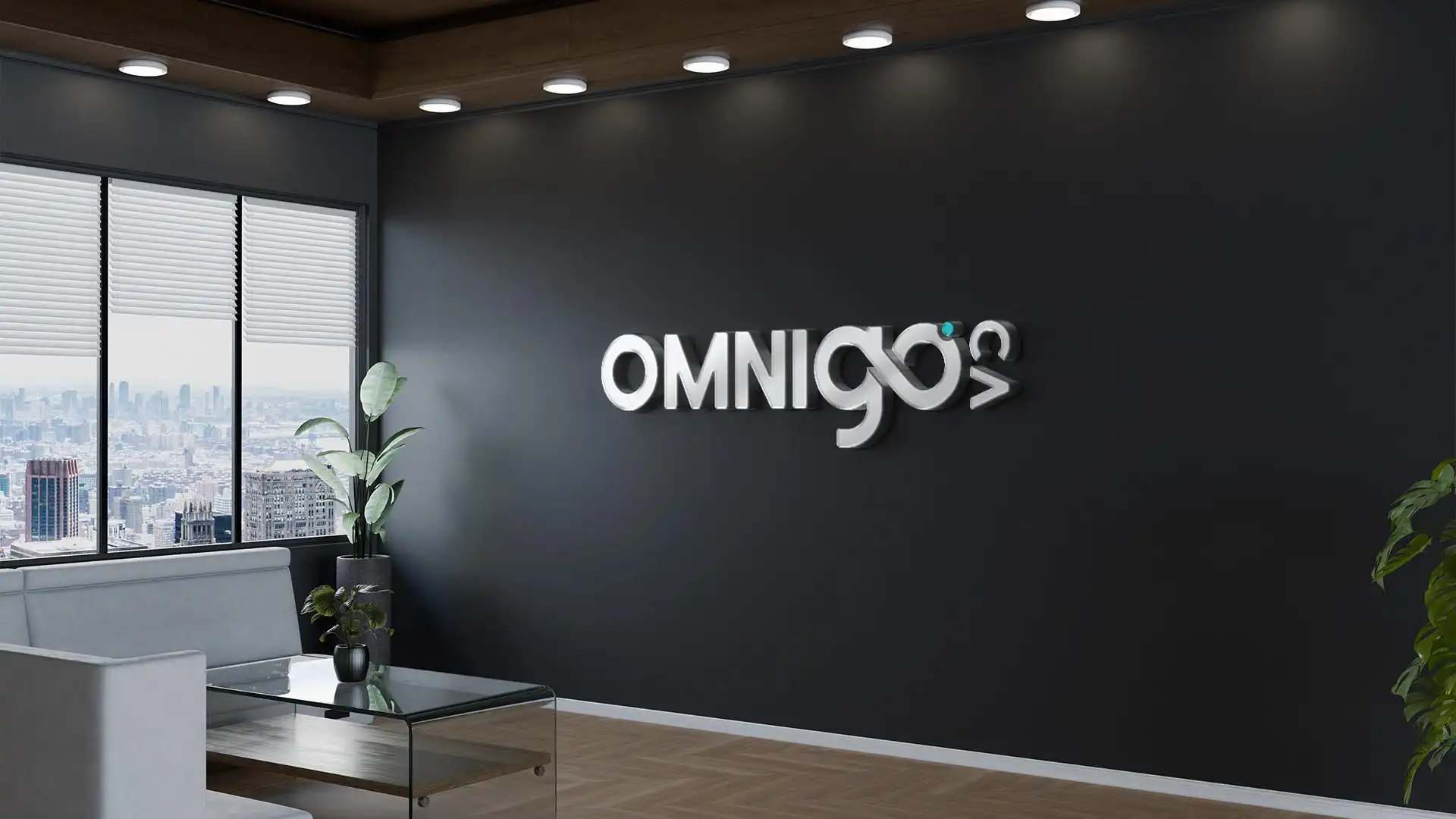
Omnigo.ca is a growing technology company that aims to evolve its brand image to better reflect the nature of its services, its personality, and its ambition. This project is a continuation of strategic support that helped clarify the company’s positioning, mission, vision, and values. For this mandate, we implement a two-phase co-creation process, allowing the visual identity to be aligned with the company’s strategic vision. Through mood boards, graphic iterations, and constant exchanges, we bring forth a new identity that combines simplicity, accessibility, energy, and professionalism.
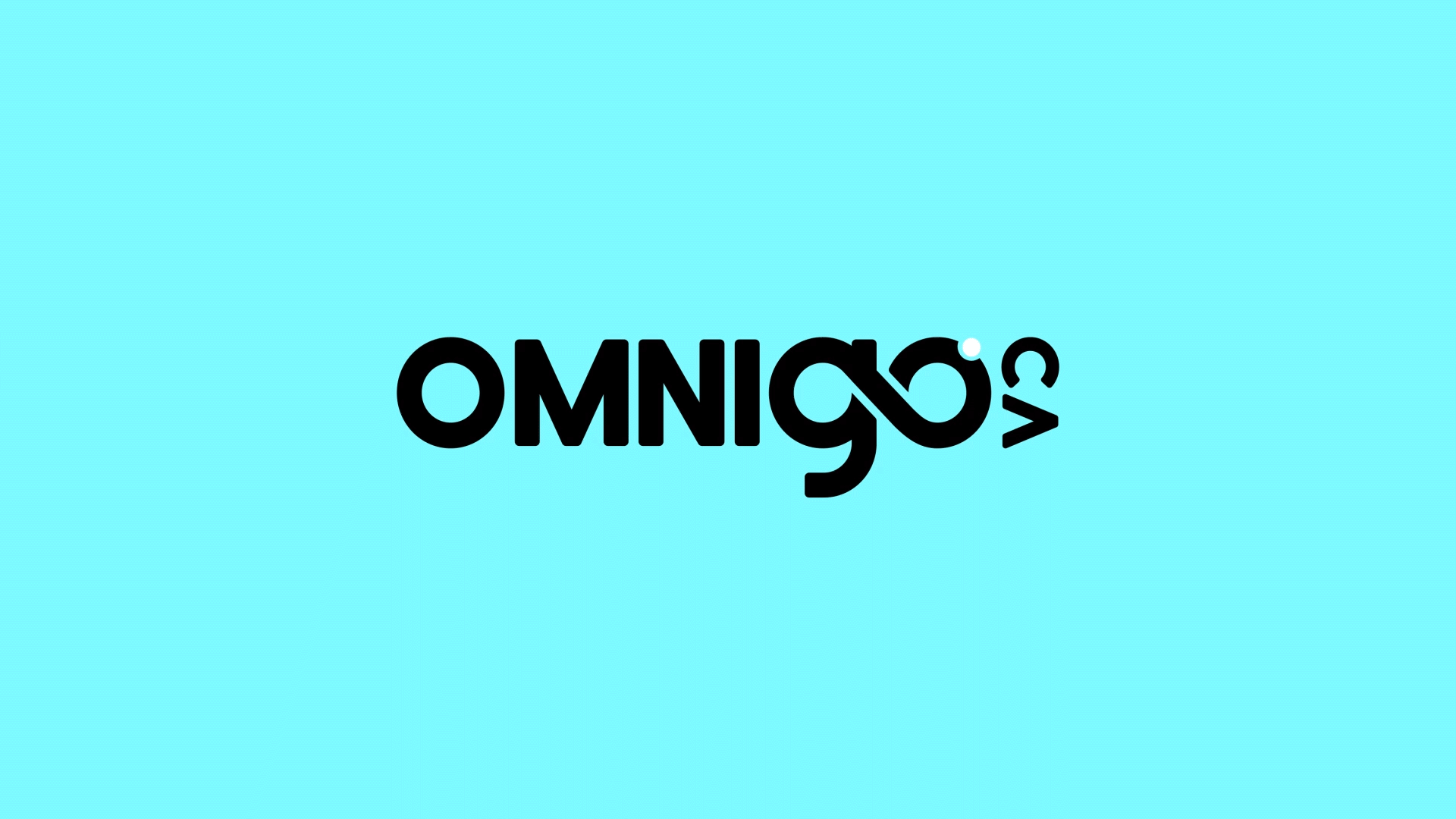
Even before beginning the visual exploration phase, we guide the Omnigo team through in-depth strategic reflection. This step aims to lay the foundations for the future identity by clarifying the company’s positioning, mission, vision, and values. Through collaborative workshops and a comprehensive audit of the existing brand, we identify the key elements of its DNA and the differentiating factors to highlight. This work allows the creative process to be aligned with a shared understanding of the company’s ambitions, while ensuring consistency between the overall strategy and the projected image.
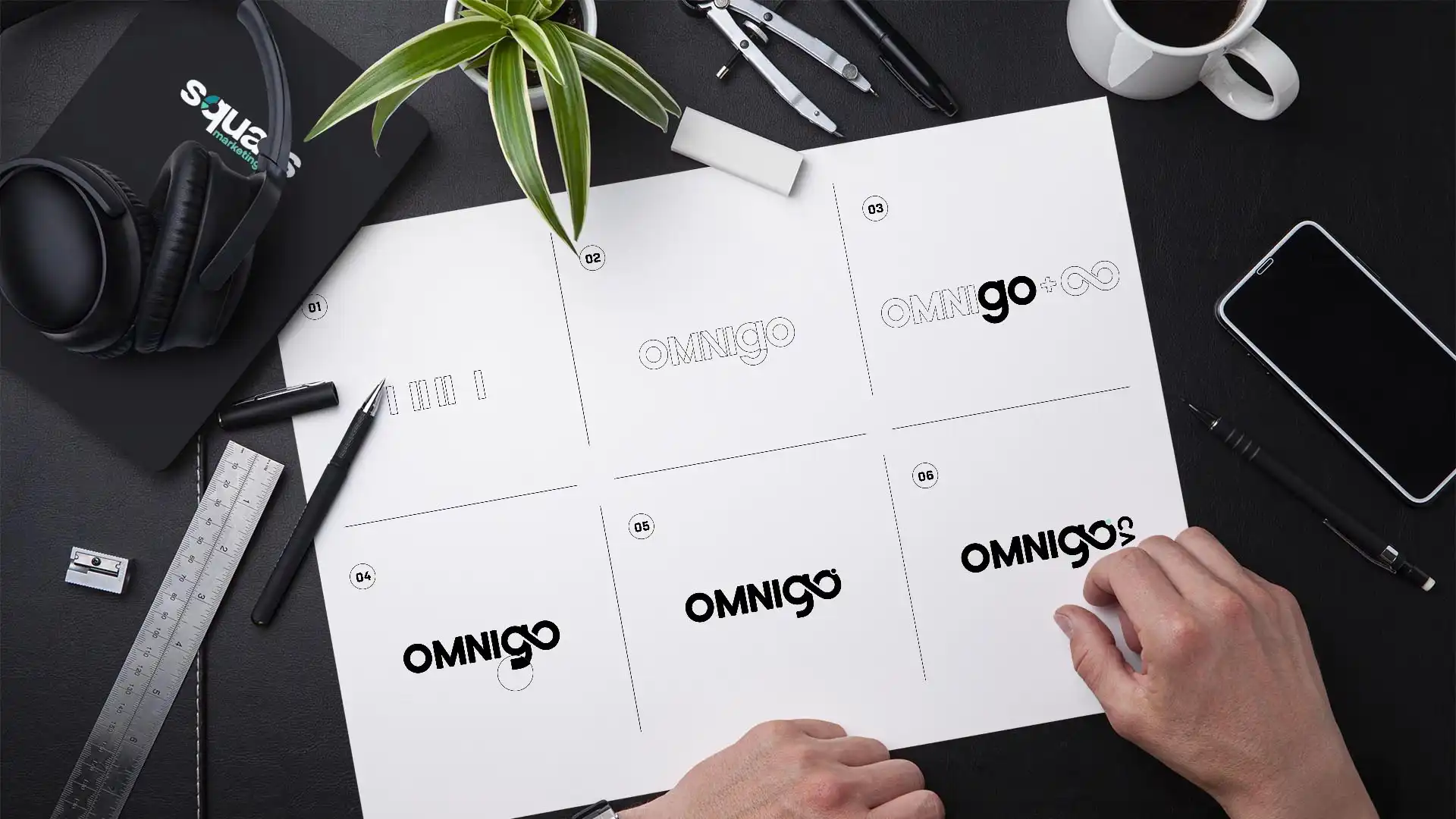
The project begins with a creative research phase aimed at understanding the aesthetic universe with which the Omnigo team identifies. We create a selection of mood boards bringing together contrasting typographies, color palettes, iconographic treatments, and graphic styles. These boards are presented to the team, who are invited to express their preferences, validate certain choices, and comment on the elements that resonate with their vision.
This step allows for the emergence of a common visual vocabulary and the identification of graphic codes that will serve as the basis for the new identity. It reveals a strong appeal for a clean style, a dominant two-color palette, understated design elements, and modern, clear, and accessible typographies.
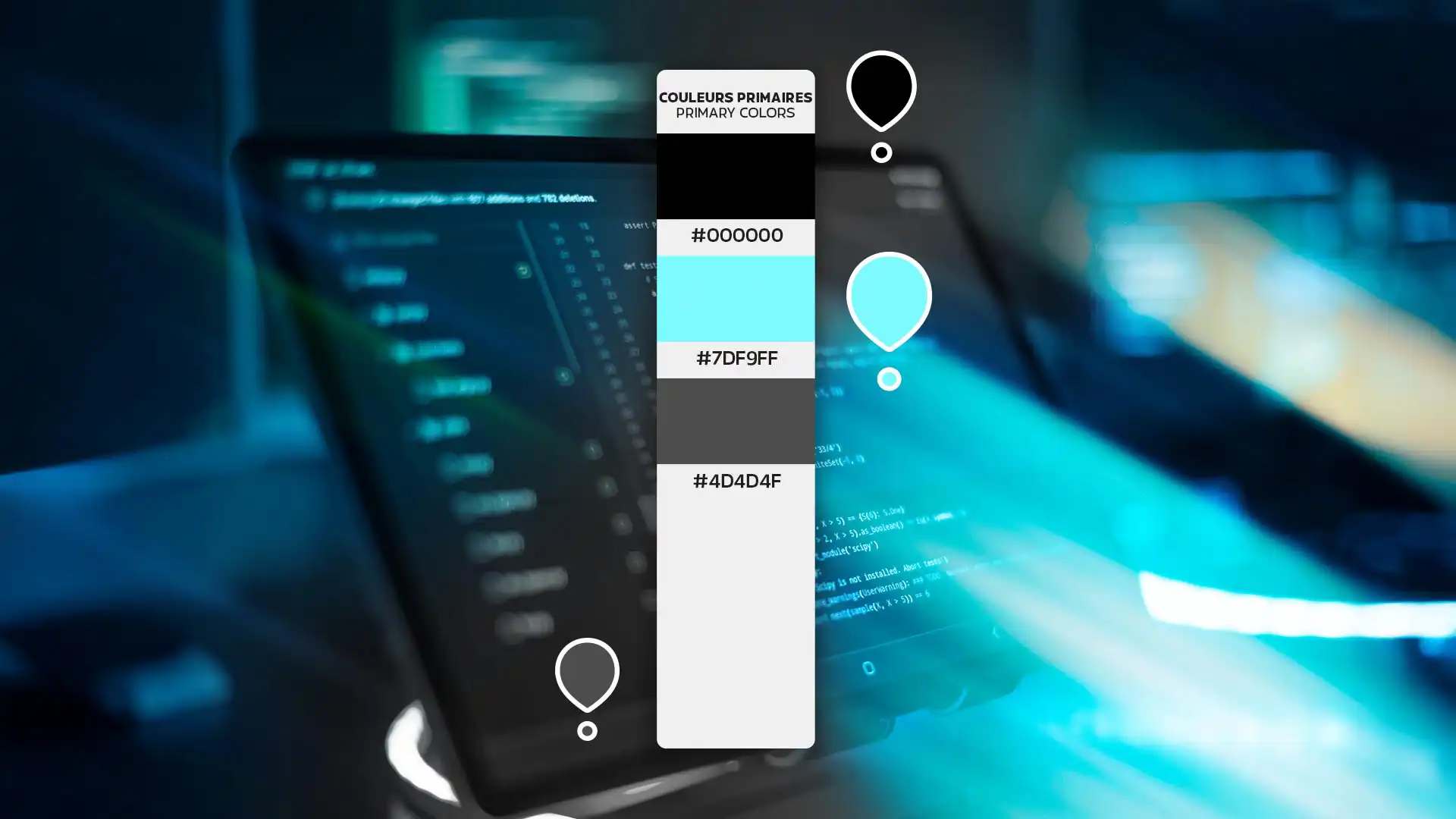
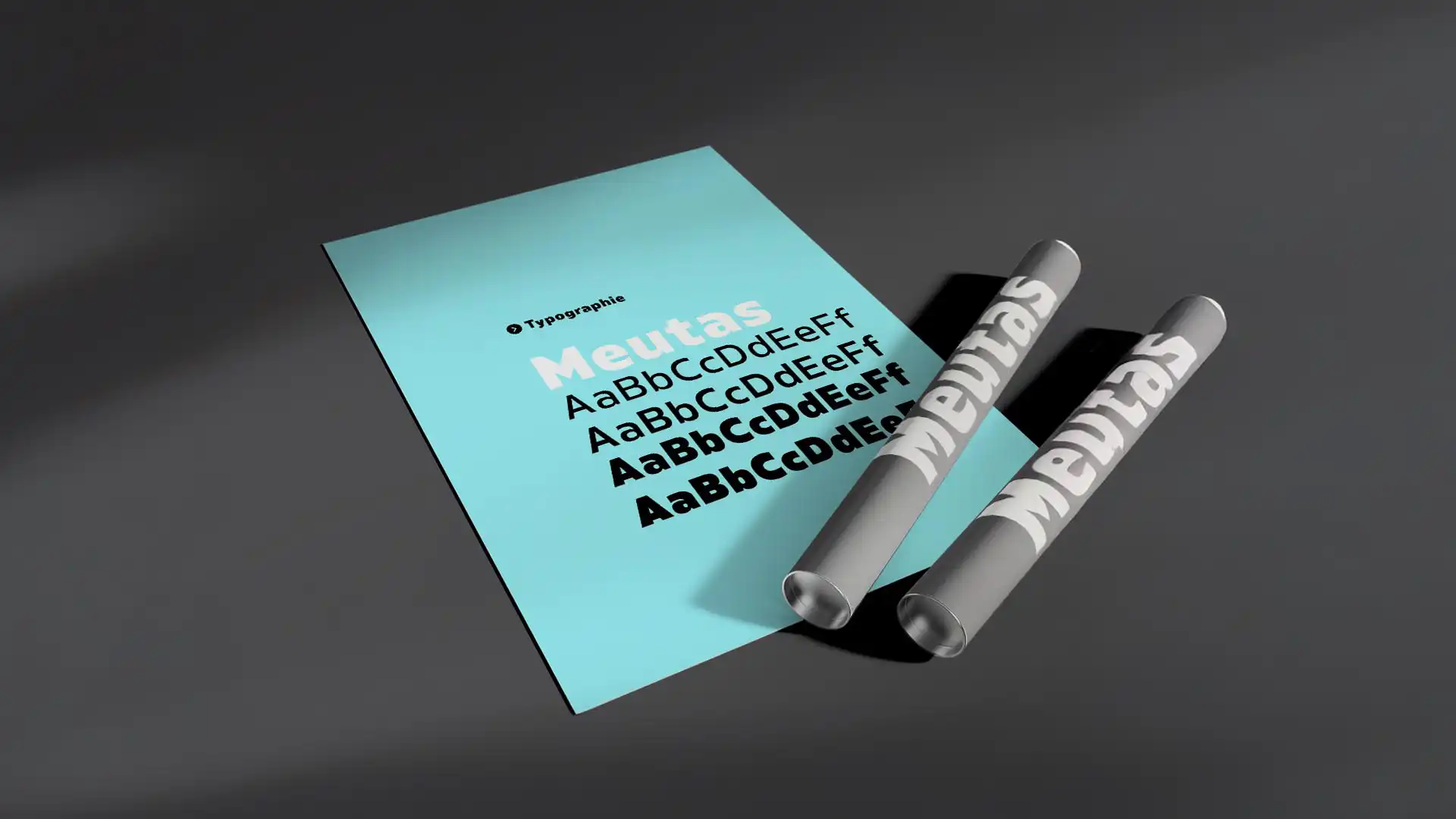
Based on the validated inspirations, we design several logo options, each exploring a different facet of the brand’s positioning. Some proposals highlight human connection and customer proximity, while others emphasize technology and digital tools. Each option is based on a coherent combination of typographies, symbols, and colors, allowing the Omnigo team to project the visual impact of each creative direction.
A second round of presentations, focused on analyzing the proposals, is organized. The team evaluates the strengths of each option, discusses their alignment with the company’s values, and refines its choice. This process not only allows for convergence towards a strong graphic solution but also generates a sense of buy-in and pride around the new image.
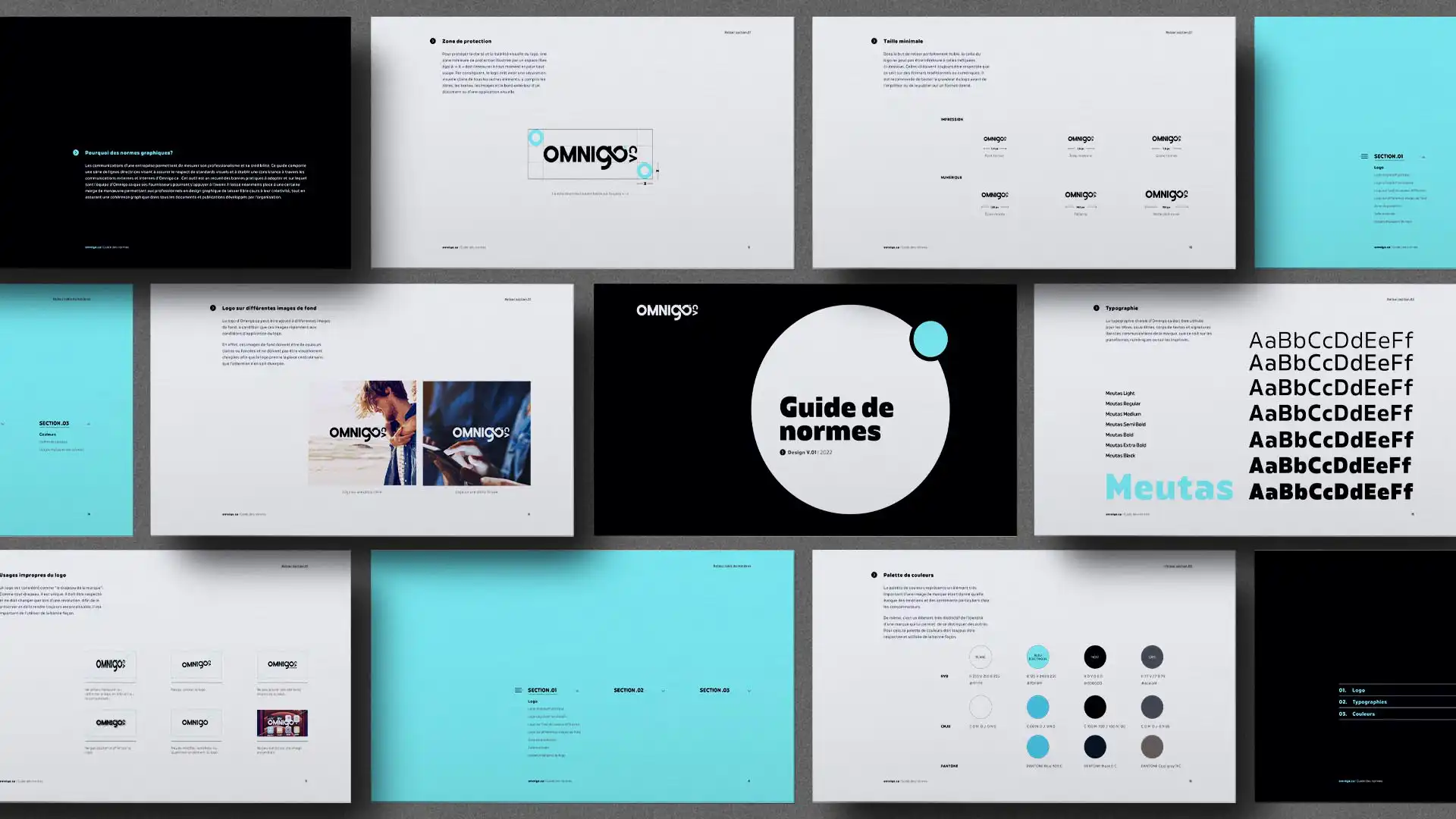
The final identity chosen is based on a simple and dynamic typographic logo. The choice of typography, both contemporary and legible, reflects the accessibility and clarity of the services offered by Omnigo. The color palette consists mainly of electric blue and black, evoking innovation, technological grounding, and professional rigor.
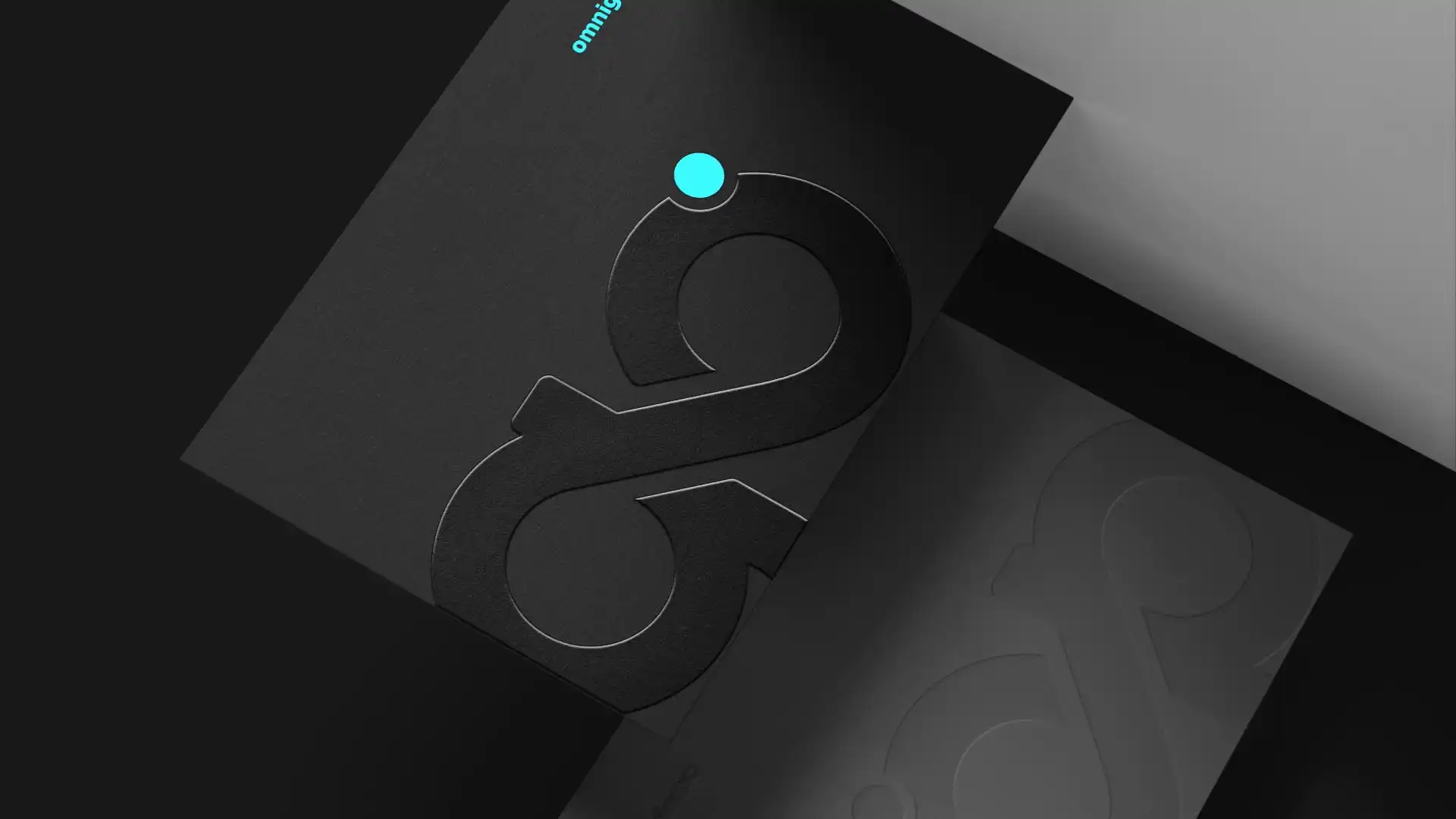
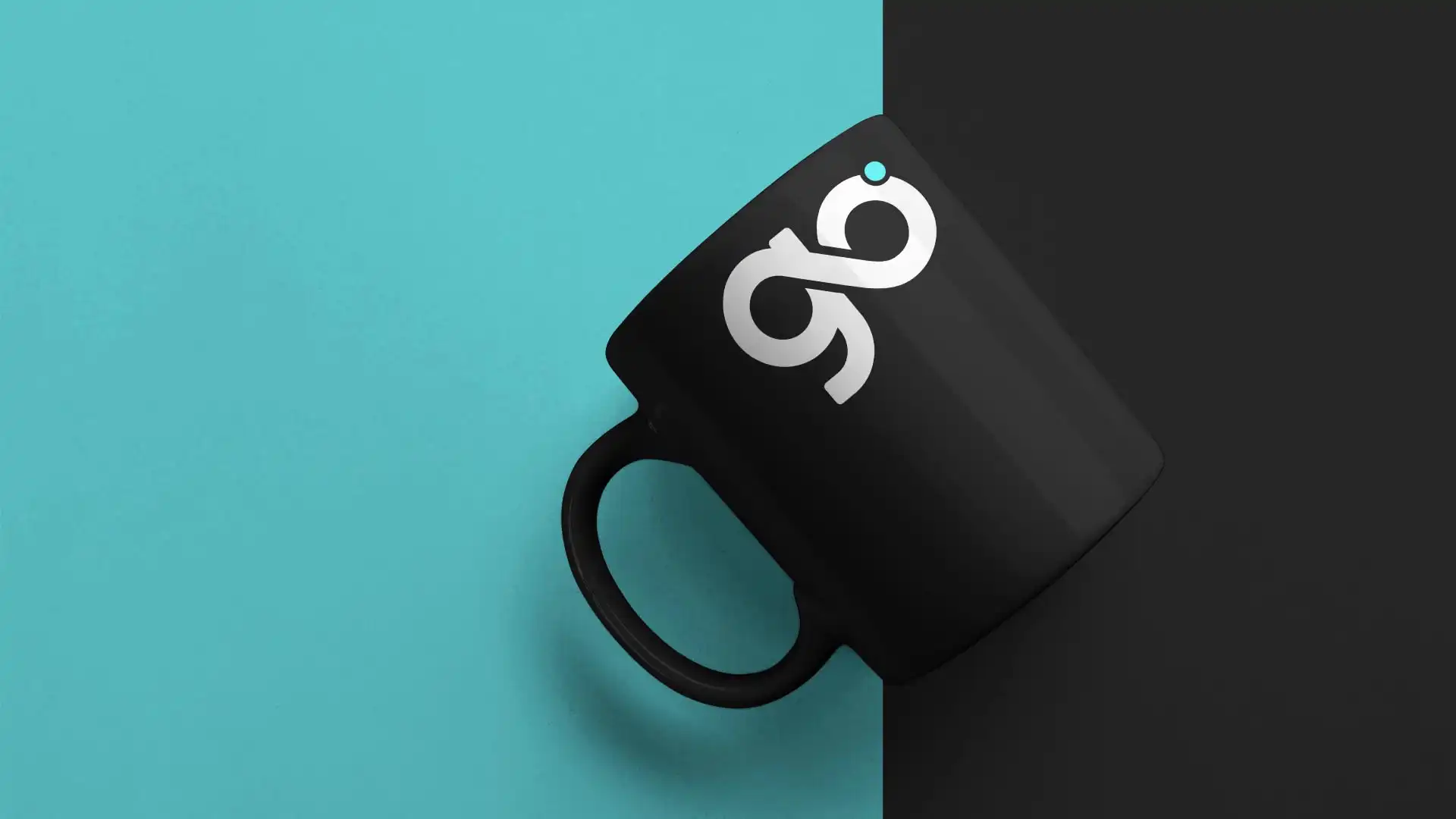
The visual system designed around the logo allows for multiple variations: monochromes, overlays on photos, uses on light or dark backgrounds. Each use is guided by a detailed style guide that ensures consistency across all company communications. This entire system allows Omnigo to evolve its brand towards a strong, recognizable, and decidedly current identity.
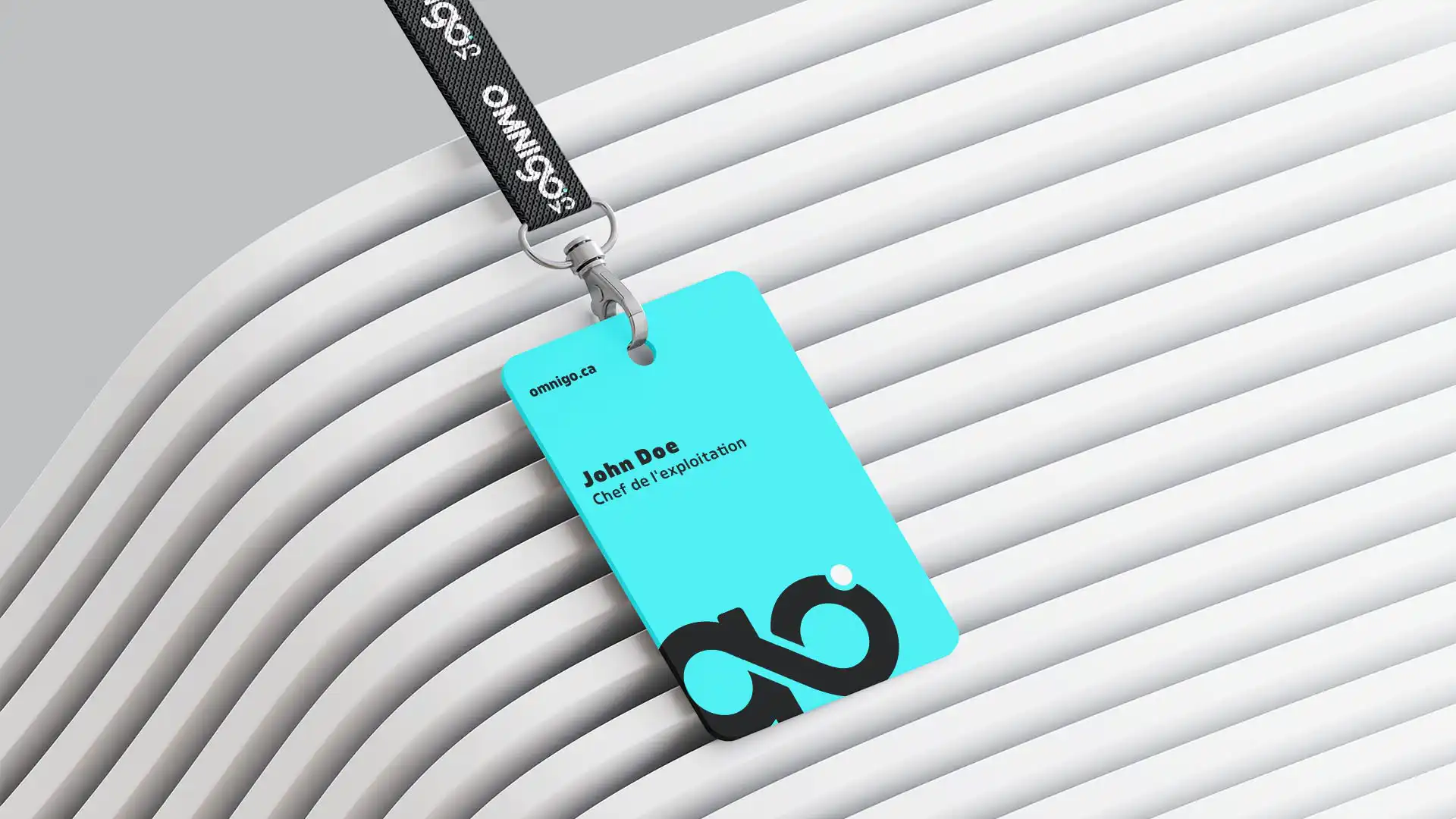
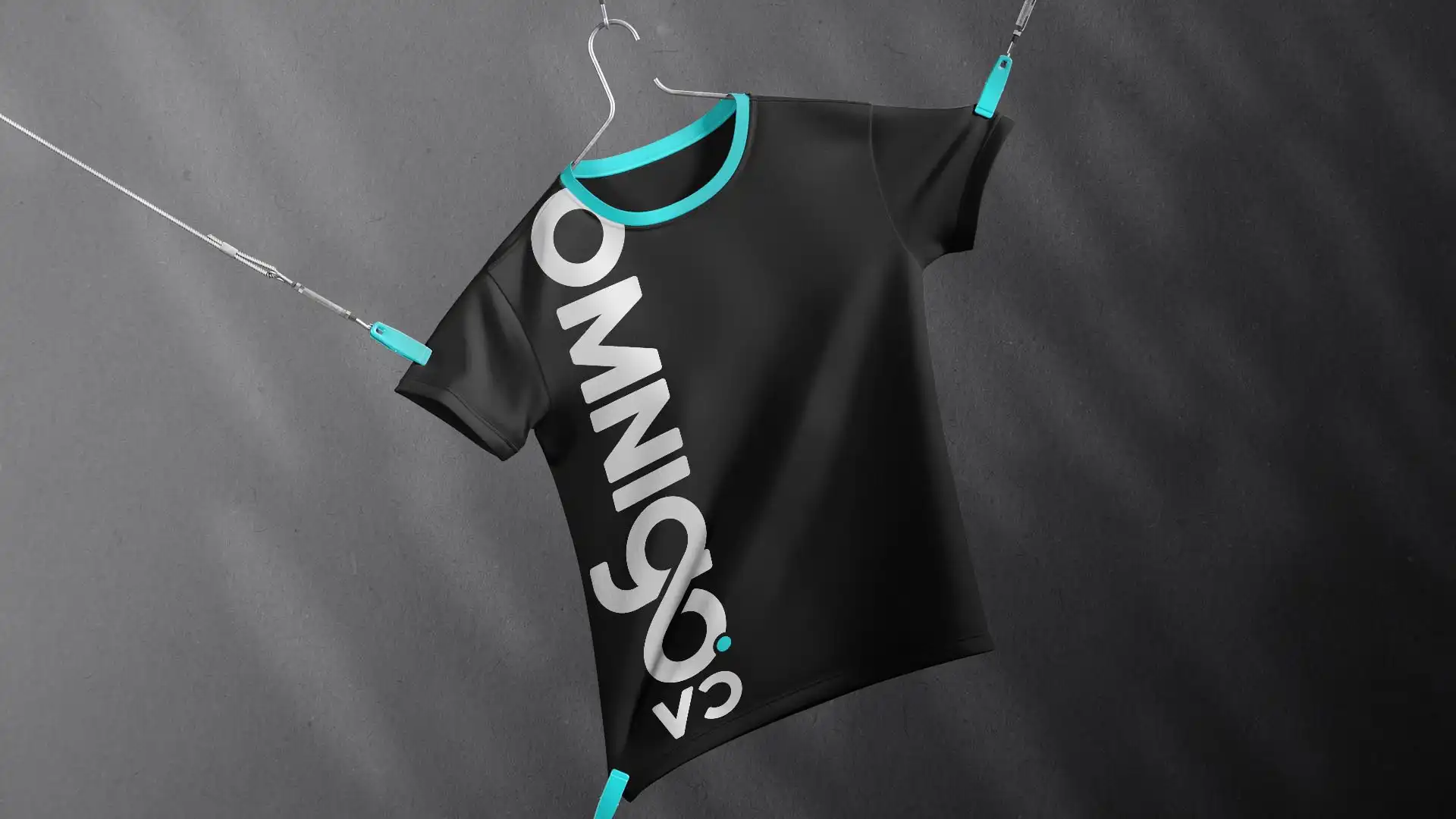
This collaborative and iterative approach demonstrates the importance of linking aesthetics to strategic objectives. Omnigo’s visual identity becomes a true vehicle for its promise: to make digital simple, human, and reliable.
